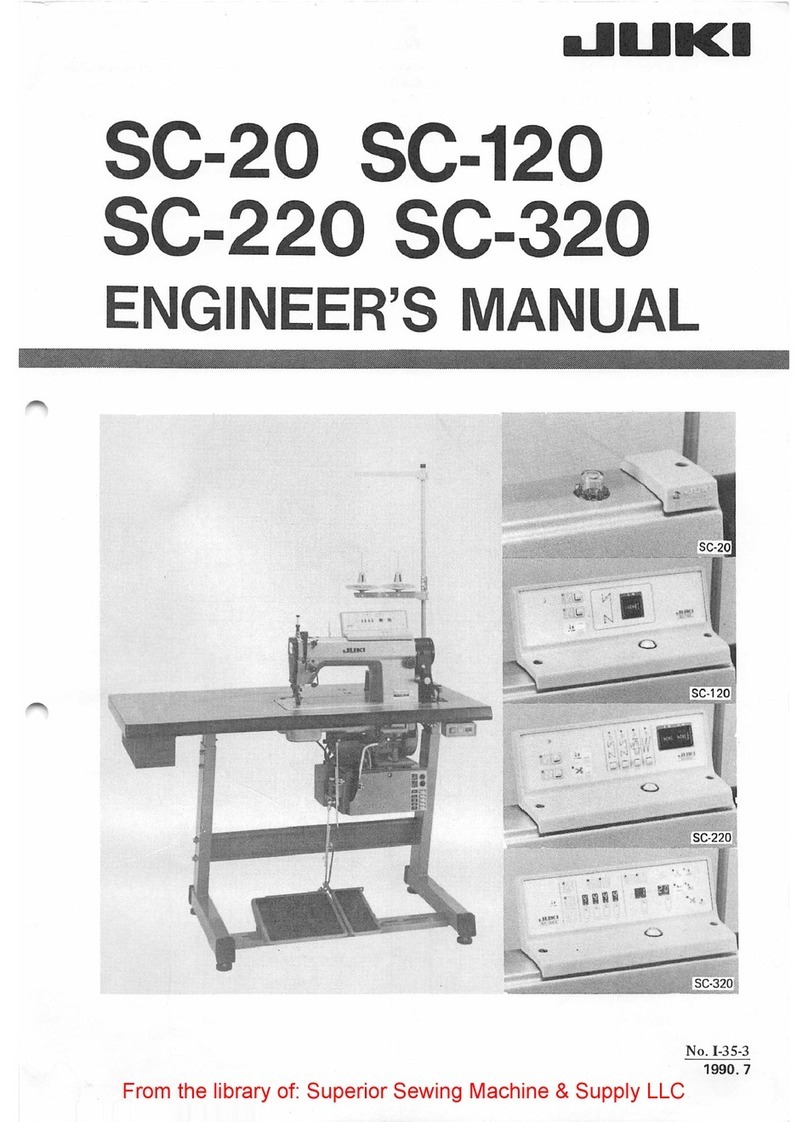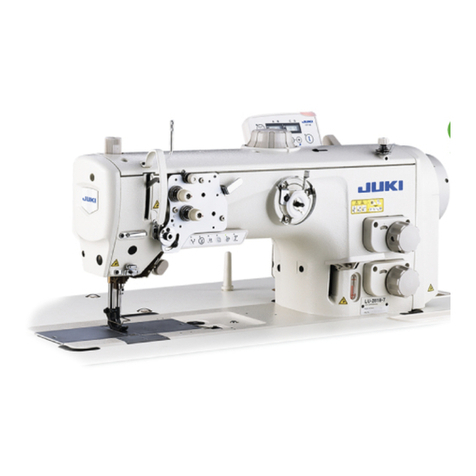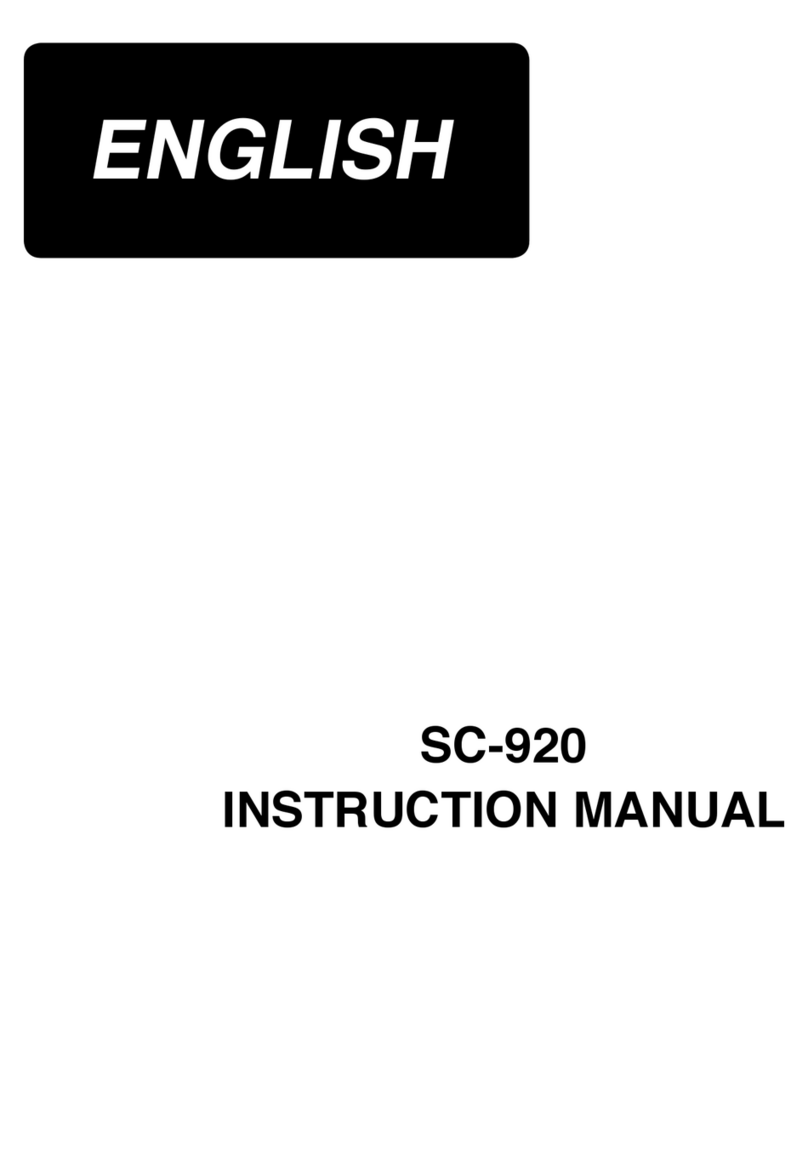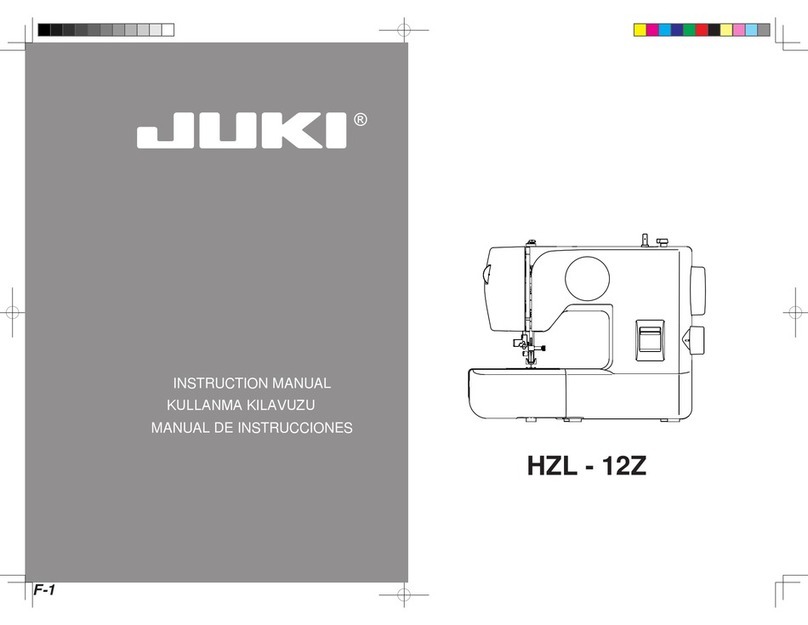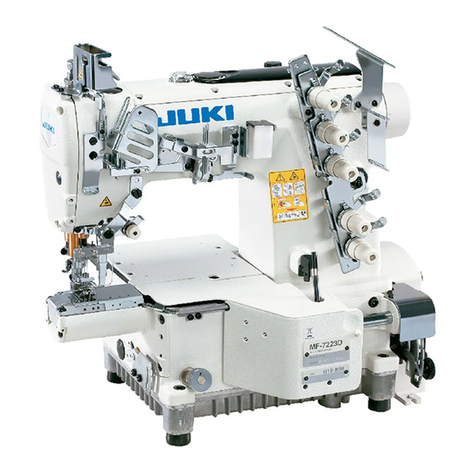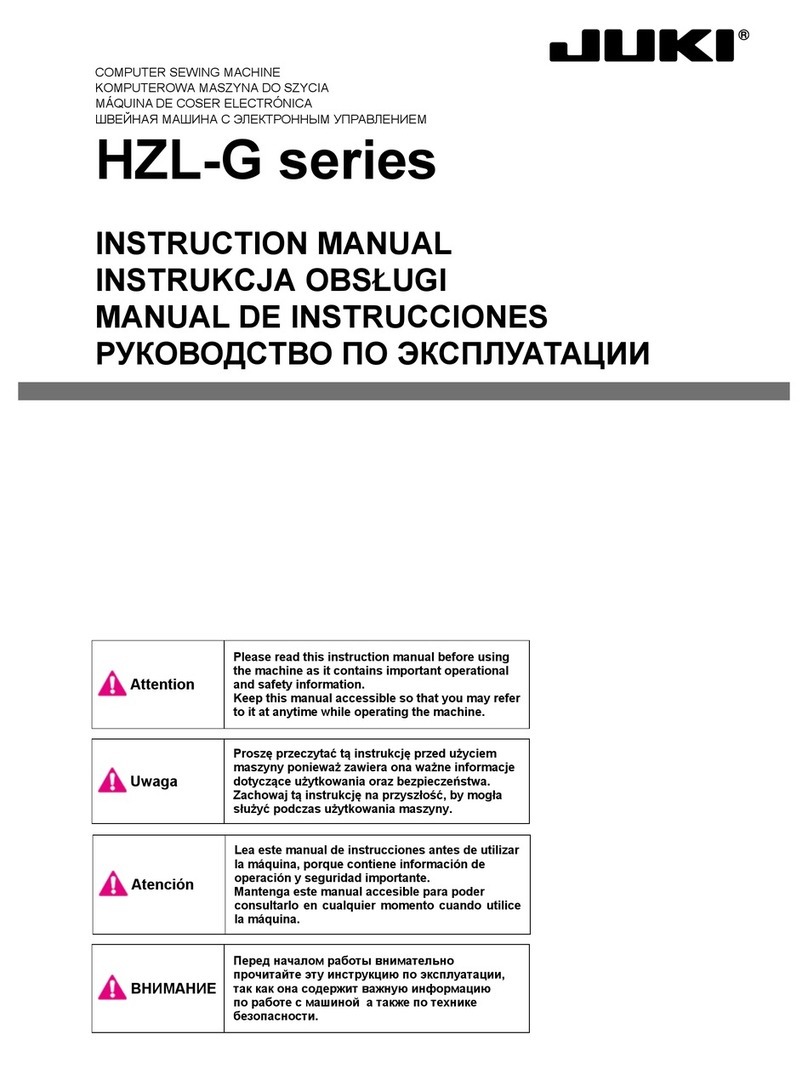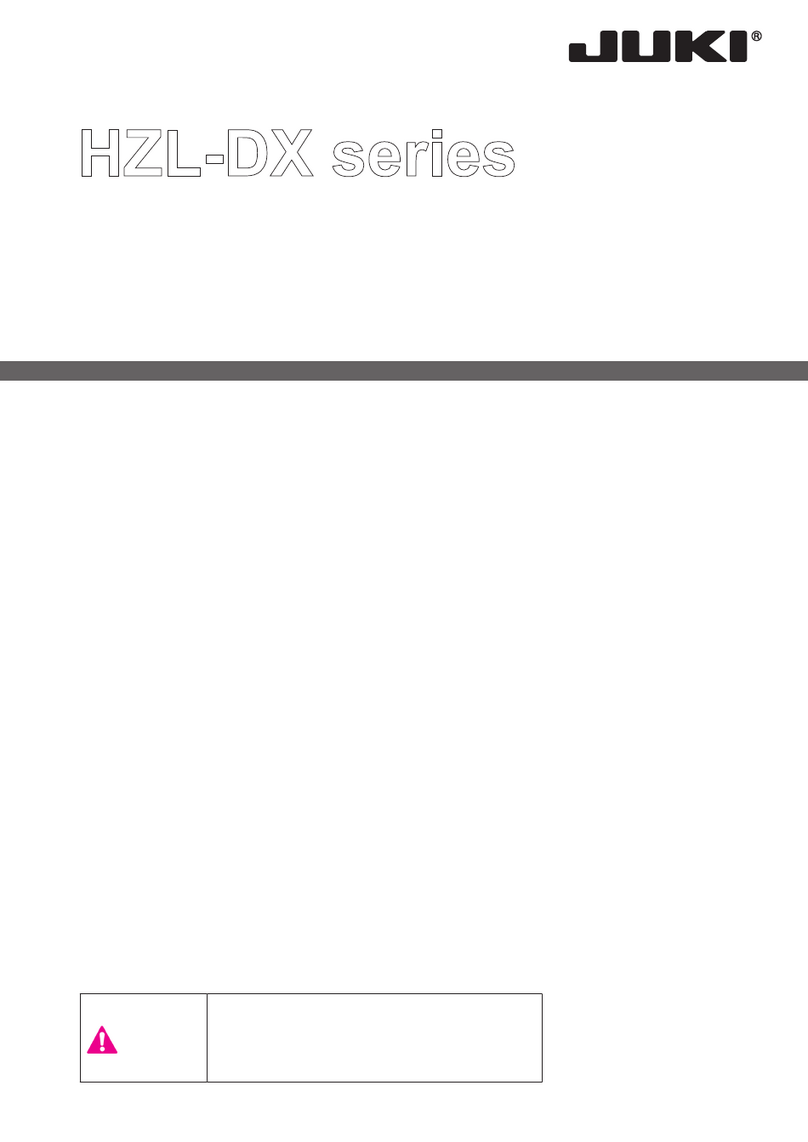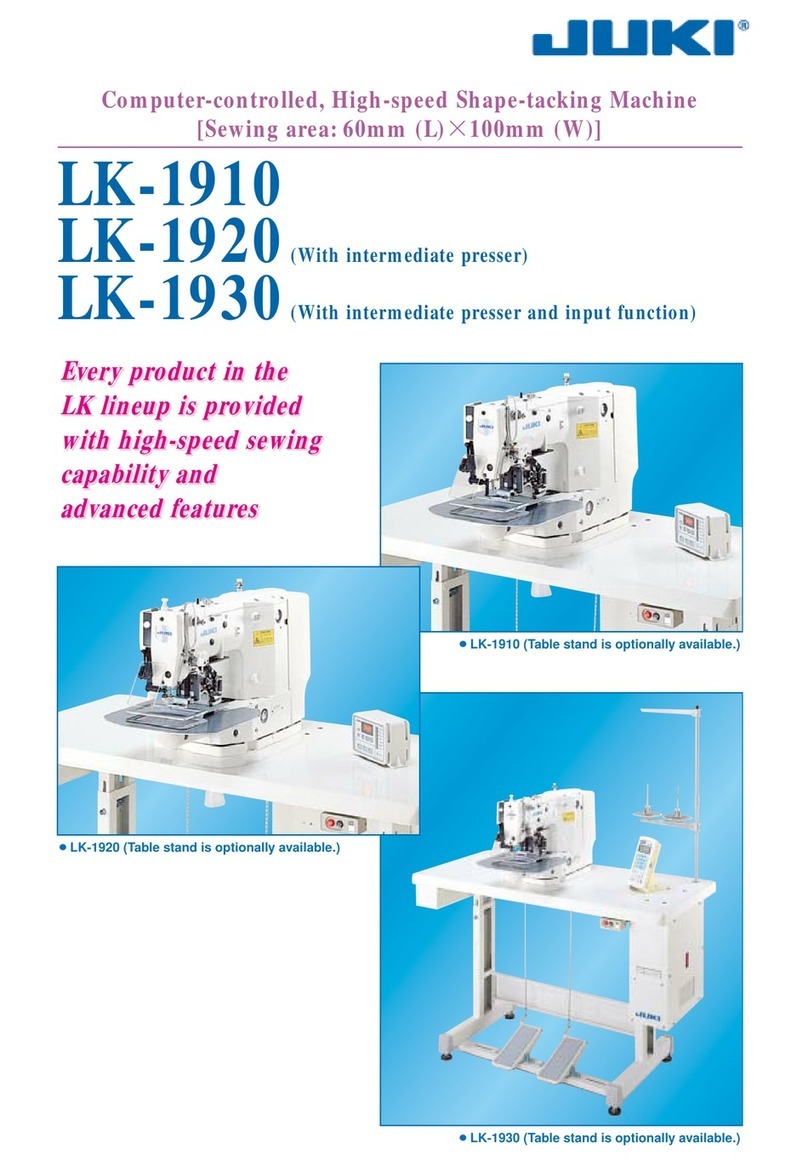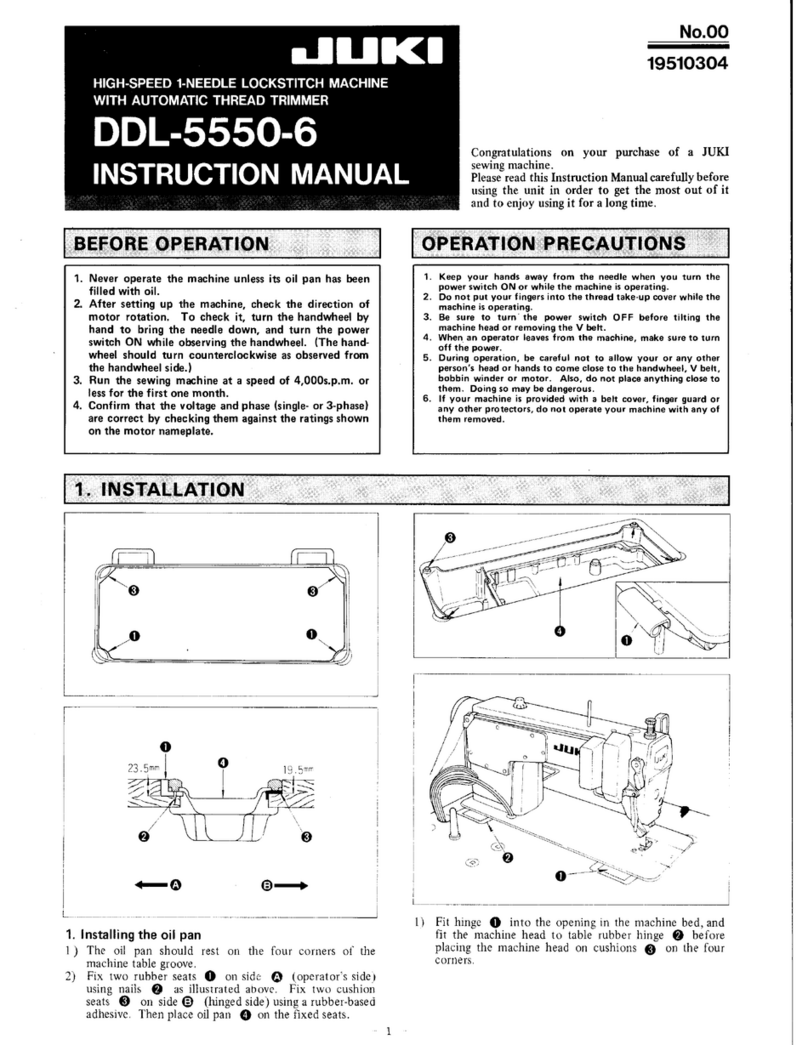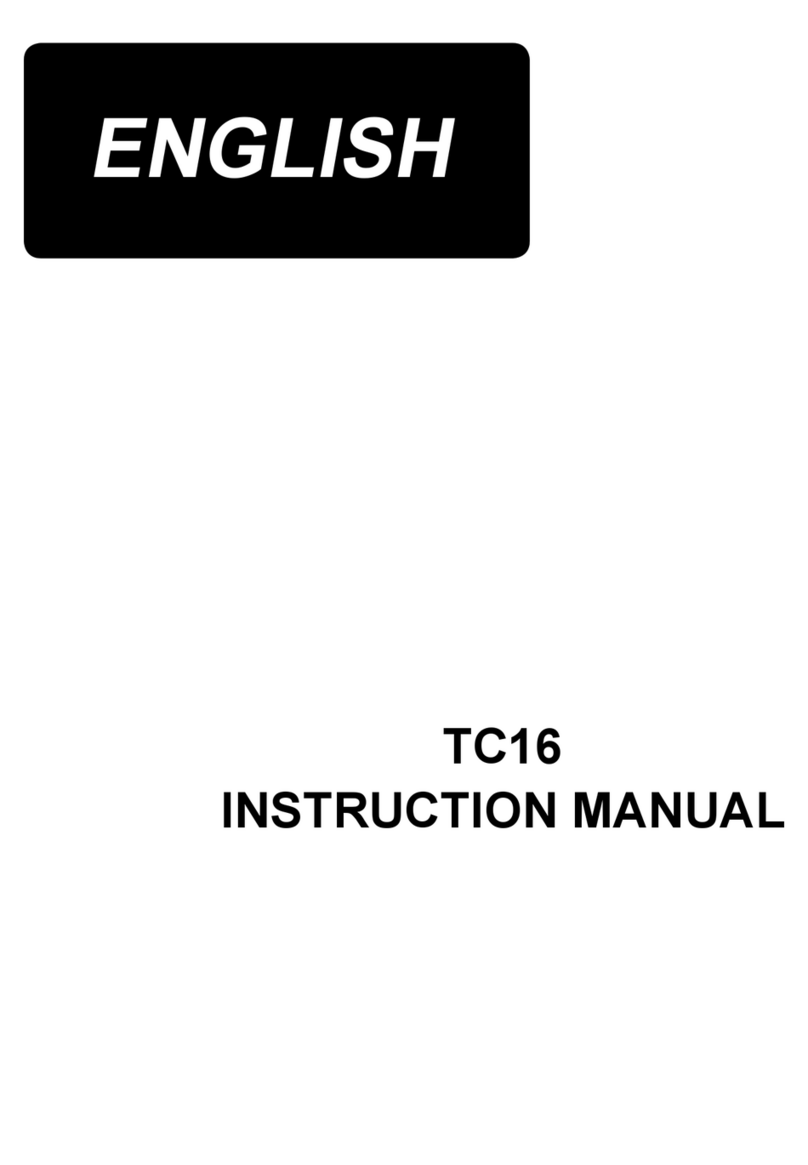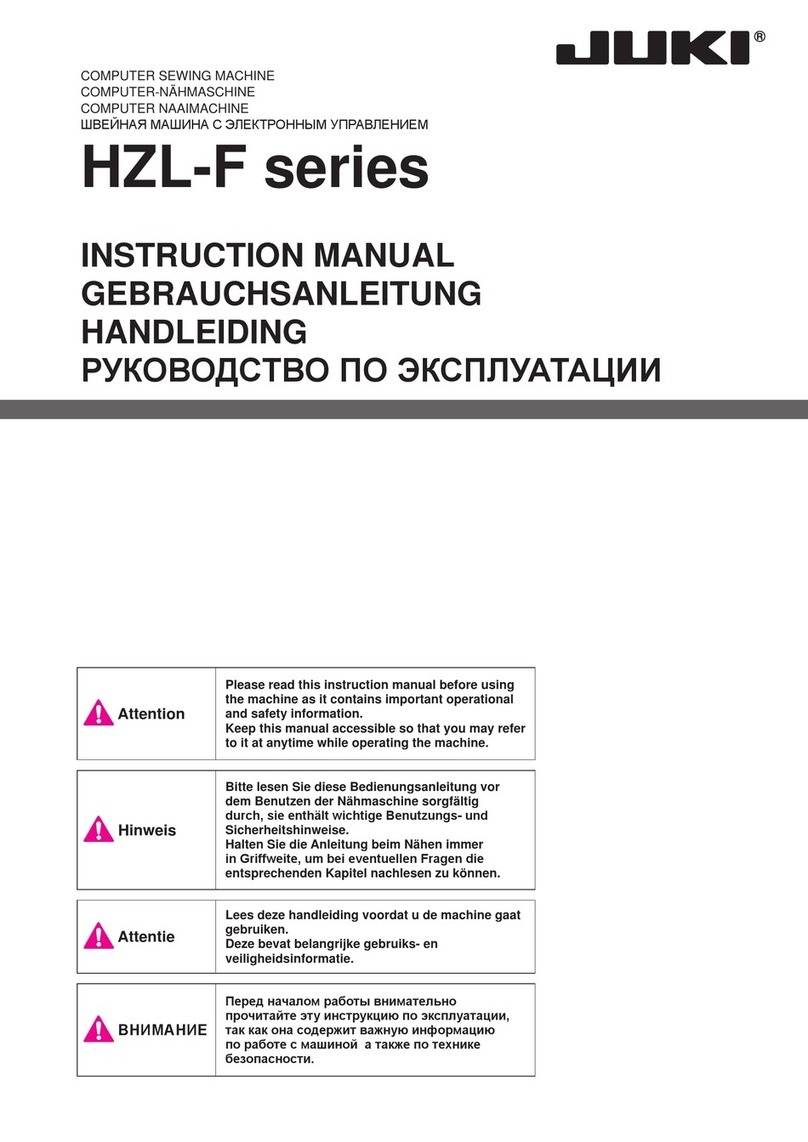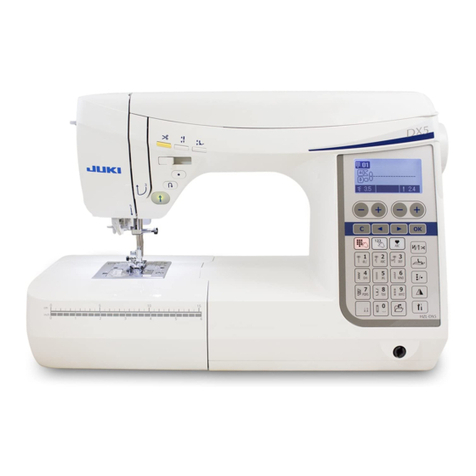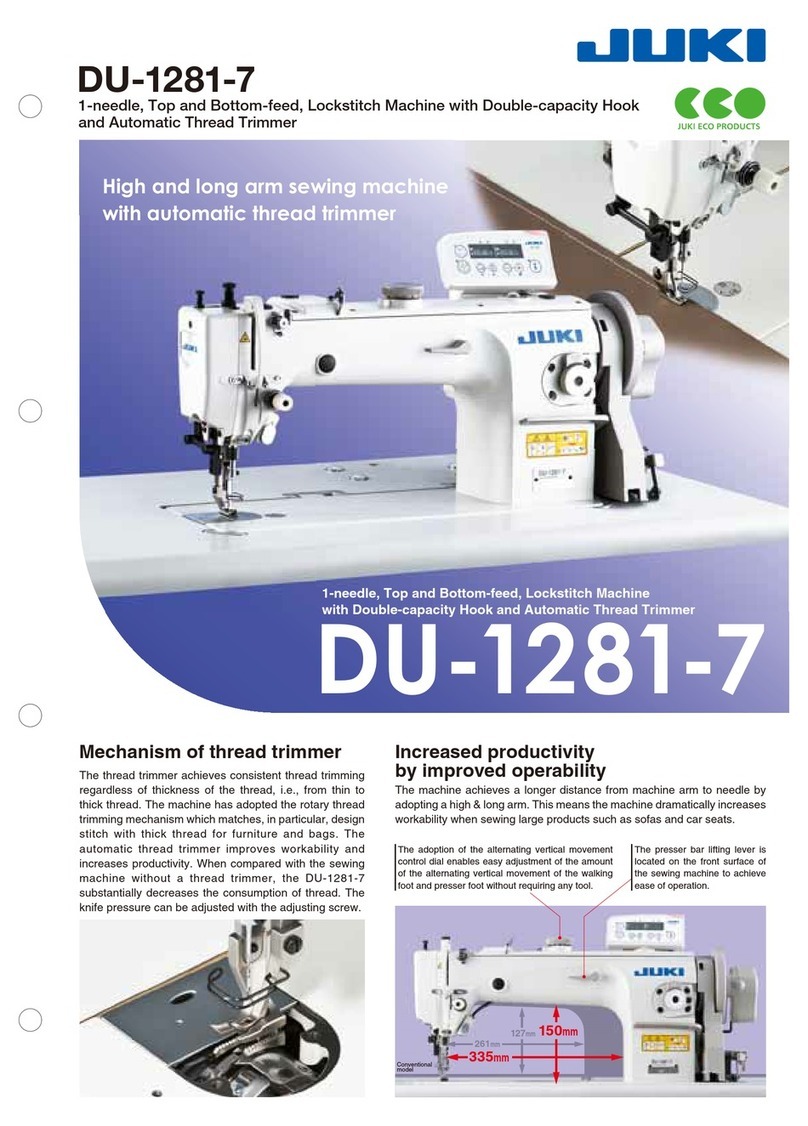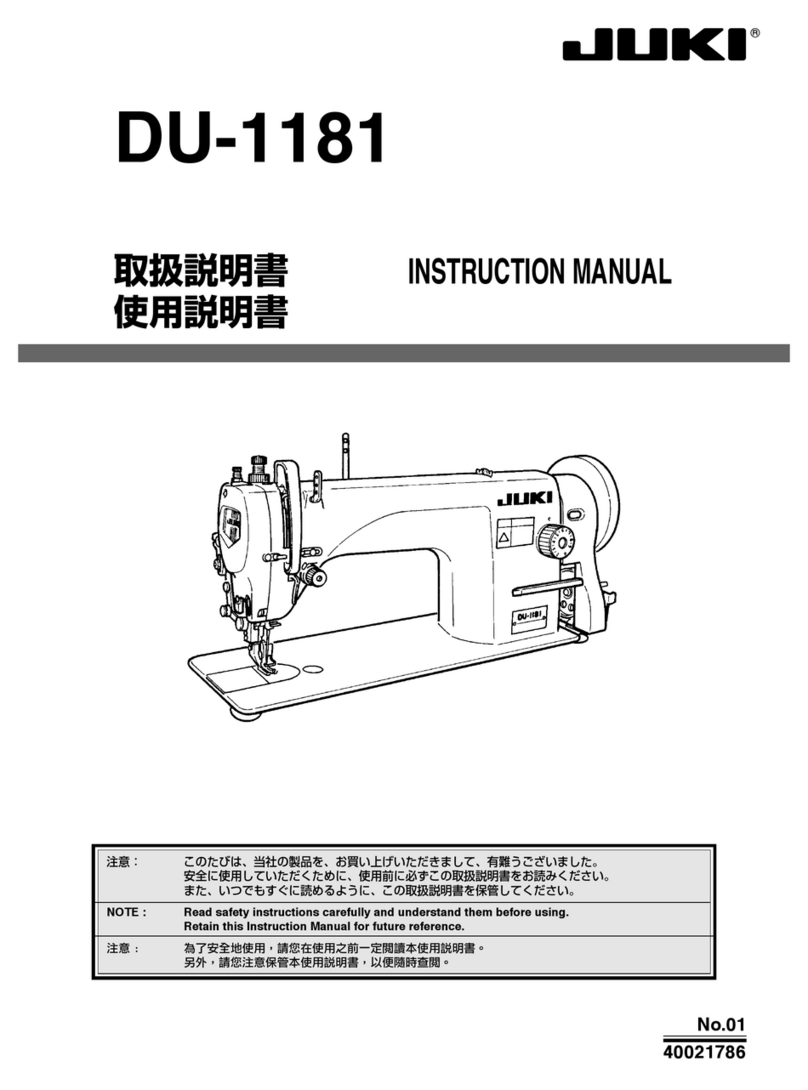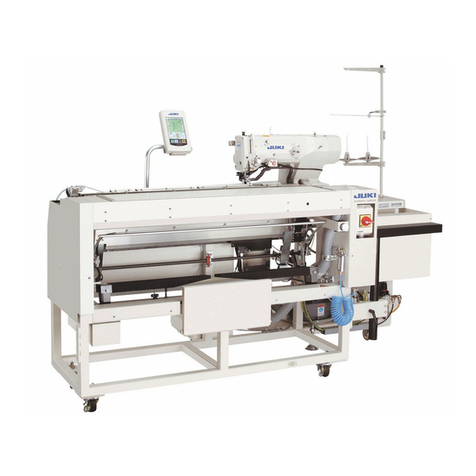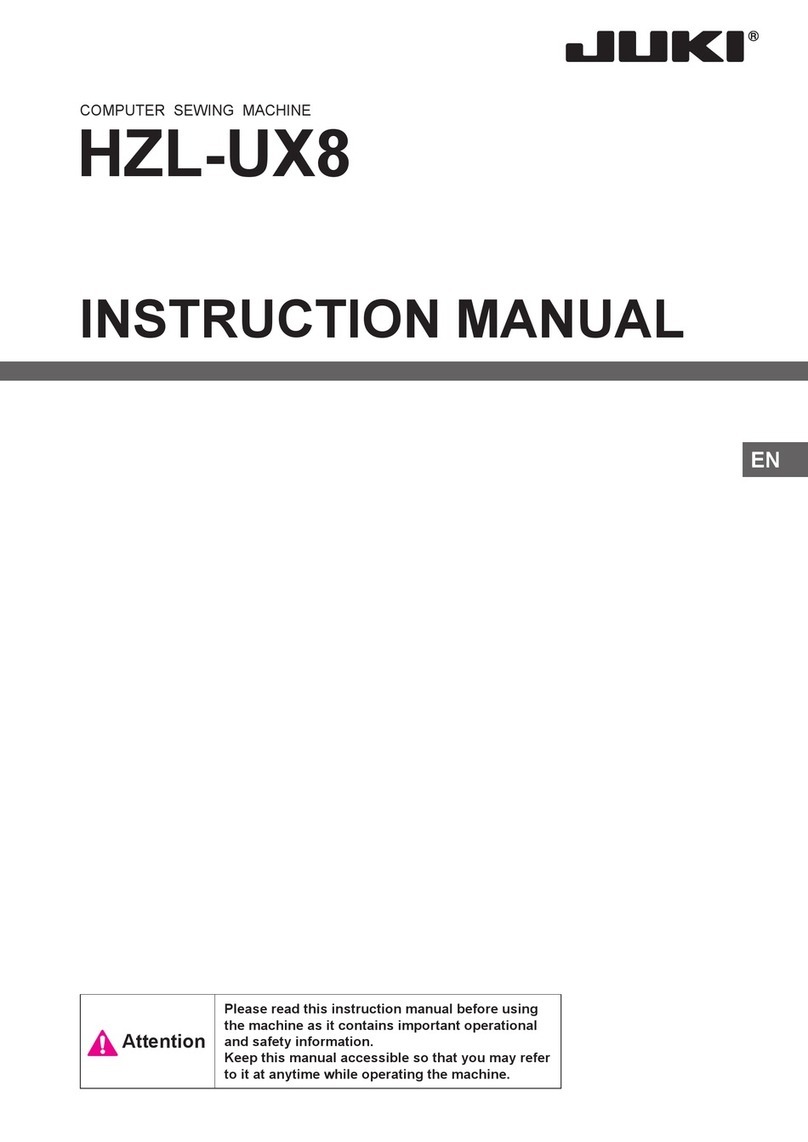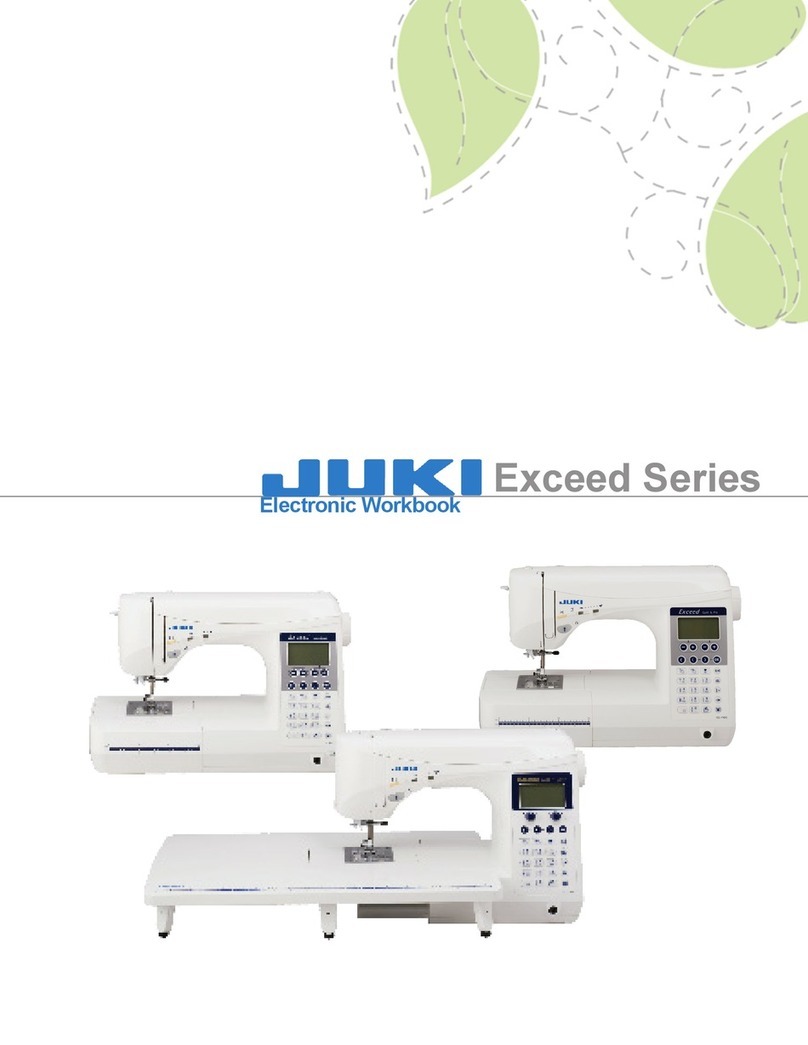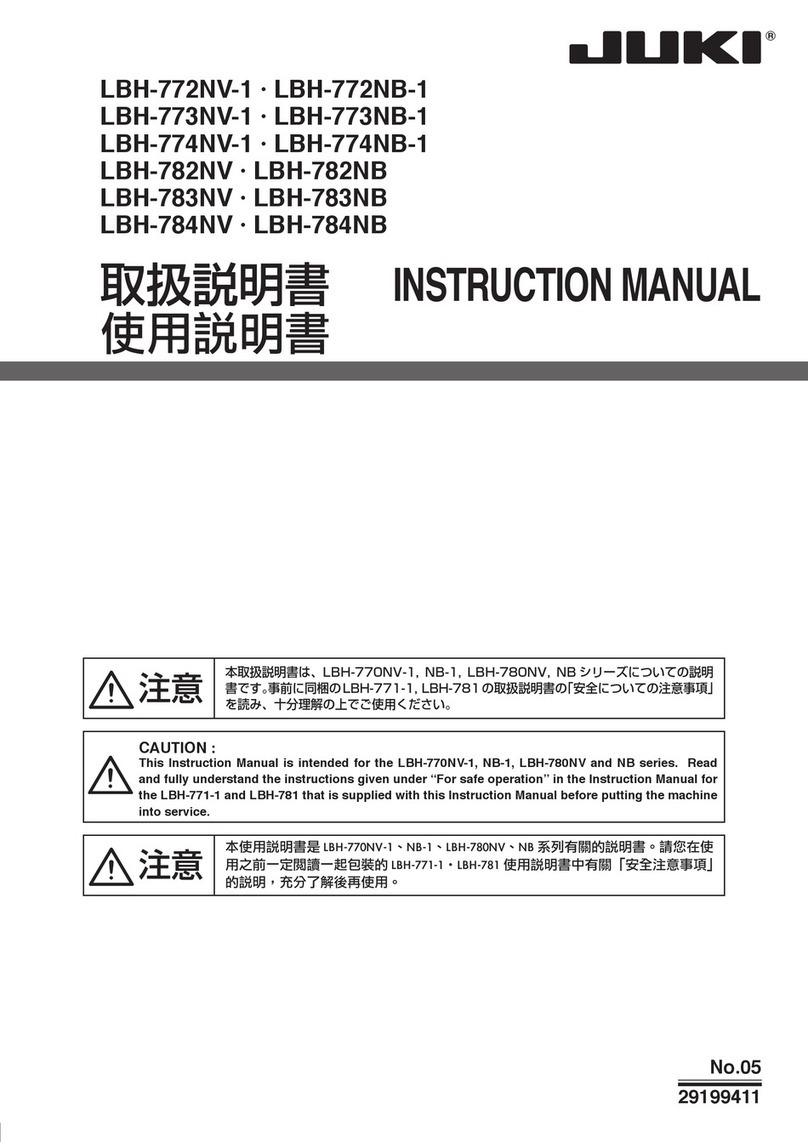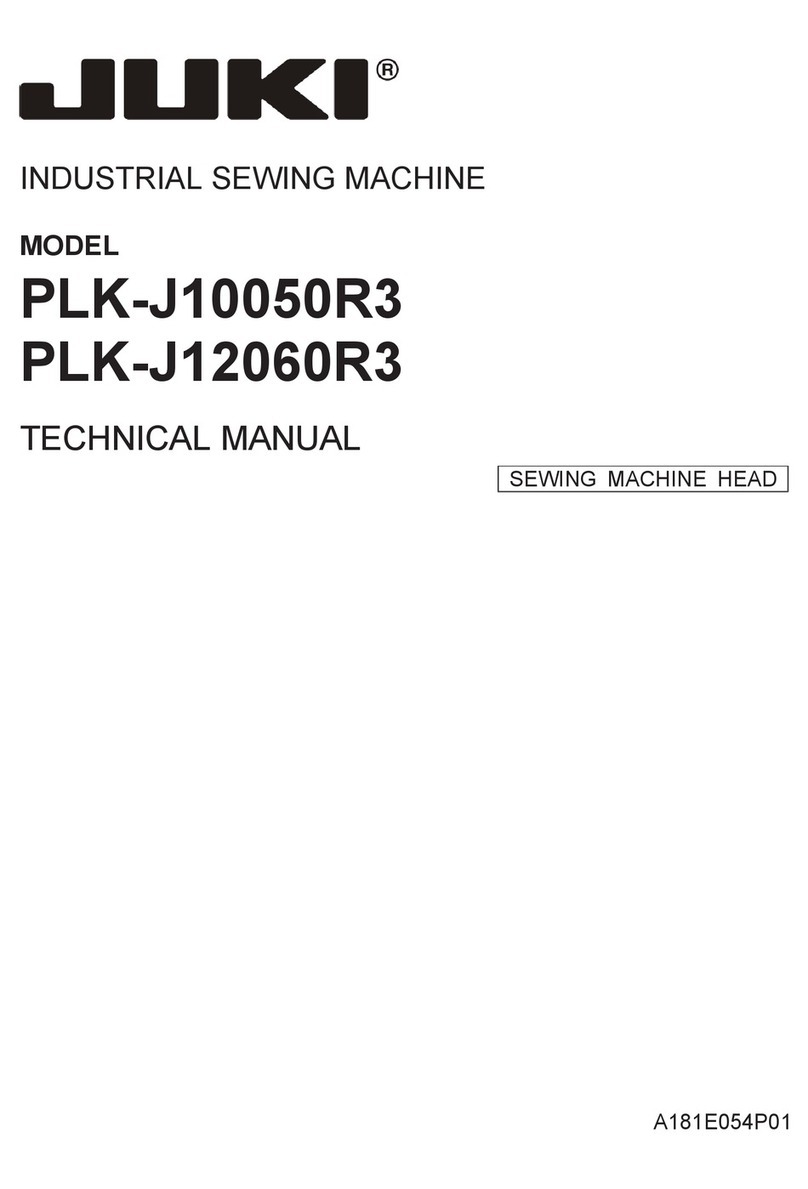
i
CONTENTS
1. SPECIFICATIONS .............................................................................................1
2. CONFIGURATION .............................................................................................2
3. INSTALLATION..................................................................................................3
3-1. Installing the operation panel........................................................................................3
3-2. Installing the power switch and the button switch......................................................4
3-3. Installing the air hose.....................................................................................................6
3-4. Installing the thread stand ............................................................................................7
3-5. Cautions for the compressed air supply (source of supply air) facility ....................8
3-6. Installing the bobbin winder device..............................................................................9
3-7. Precautions for installation of the machine ...............................................................11
4. PREPARATION OF THE SEWING MACHINE................................................12
4-1. Lubricating method and check of the oil quantity.....................................................12
4-2. Attaching the needle.....................................................................................................13
4-3. Threading the machine head .......................................................................................14
4-4. Bobbin replacement procedure...................................................................................15
4-5. Adjusting the thread tension .......................................................................................16
4-6. Adjusting the thread take-up spring and the thread breakage detector plate........17
4-7. Adjusting the thread take-up stroke............................................................................17
4-8. Needle-to-hook relationship ........................................................................................18
4-9. Adjusting the position of the thread trimmer.............................................................20
4-10. How to check the amount of oil in the hook...............................................................22
4-11. Adjusting the amount of oil in the hook .....................................................................23
4-12. Adjusting the needle hole in the throat plate and the needle...................................24
4-13. Setting the mechanical origin......................................................................................25
4-14. Adjusting the disk presser pressure...........................................................................26
4-15. Adjusting the thread end position at the beginning of sewing ................................27
4-16. Adjusting the intermediate presser stroke.................................................................28
4-17. Adjusting the needle thread air blower.......................................................................29
4-18. Making a template.........................................................................................................30
4-19. Preparation for sewing.................................................................................................32
4-20. Conguration of the operation panel..........................................................................34
4-21. Maintenance mode........................................................................................................36
4-22. List of parameters.........................................................................................................37
4-23. List of error codes ........................................................................................................43
5. MAINTENANCE OF SAWING MACHINE .......................................................59
5-1. Troubles and corrective measures (Sewing conditions) ..........................................61
5-2. Disposal of batteries.....................................................................................................63
5-3. Draining waste oil .........................................................................................................63
